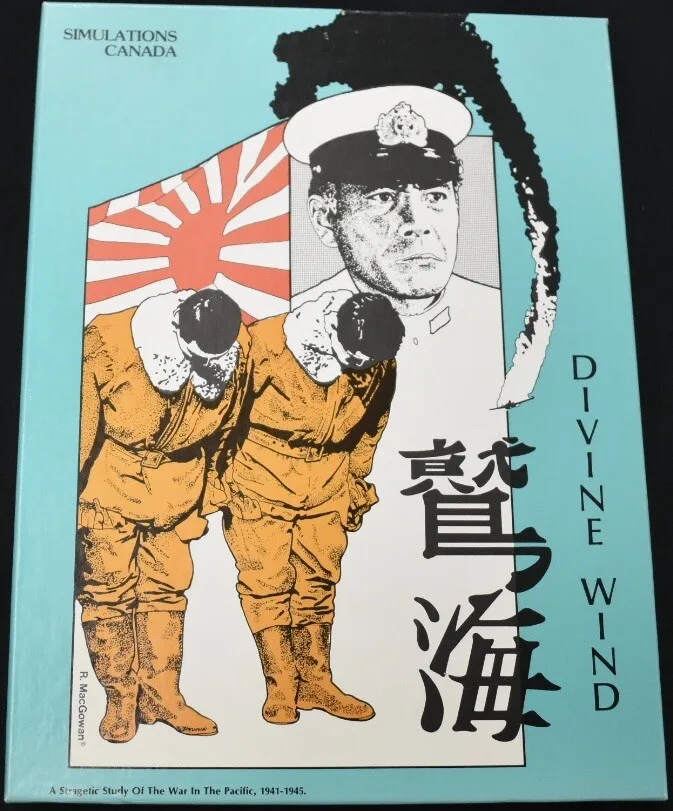Divine Wind (1981)
Divine Wind
Divine Wind is a strategic board wargame that simulates the Pacific theater of World War II, specifically Japan’s involvement from 1941 to 1945. It was published by Simulations Canada in 1981. The game features one-month turns, 250nm hexes, and units representing naval divisions, infantry divisions, corps, armies, and fleets.
Why is Divine Wind Popular?
Divine Wind is a popular game among wargamers due to its detailed simulation of the Pacific theater of World War II and its strategic Gameplay Mechanics of Divine Wind. The game is significant for its historical accuracy and its ability to provide players with a deep understanding of the challenges faced by both sides during the war.
Game Components of Divine Wind
How To Setup Divine Wind
To set up Divine Wind, players must first organize the game board into its 12 regions. Each player allocates their units and resources according to the initial setup rules, which include the distribution of operations points based on controlled bases. Extensive paperwork is required to track initiative, operations points, submarines, and construction across all regions. The game starts immediately following the attack on Pearl Harbor, with each player preparing for the first turn.
Gameplay Mechanics and Game Objective
Gameplay Mechanics
Game Objective
Player Experience
Divine Wind is known for its detailed and logistically oriented gameplay, making it a challenging but rewarding experience for players. The game requires meticulous record-keeping and strategic planning, which can be both engaging and daunting. Players must balance grand strategic decisions with operational accuracy, reflecting the complexities of the Pacific Theater during World War II.
Pros
Cons
Personal Thoughts on Divine Wind
Divine Wind is ideal for dedicated wargame enthusiasts, particularly those with a strong interest in the Pacific Theater of World War II. It offers a highly detailed and realistic simulation that, while complex, provides a deeply rewarding experience for players willing to invest the time and effort. However, it is not suited for casual gamers or those looking for a quick, light-hearted game experience. Instead, it is a game for those who relish in the intricacies and challenges of historical wargaming.
We are supported by our audience. When you purchase through links on our site, we may earn an affiliate commission, at no extra cost for you. Learn more.

